By J. Patrick Lewis
You can think of—red hawk feather,
Silver penny, pinkie ring,
Yo-yo, M&M’s, a ticket
Pictures of your pug. A poem
Needs a pocket on the side.
So—
For imagination grows
From the deepest secret pockets
Every pocket poet knows.

Is there anyone in the world of children’s poetry whom you consider to be your mentor?
Langston Hughes and Carl Sandburg were my silent mentors. Their work spoke to me loudly and clearly.
You’ve included the work of many “new” poets in your anthologies. How do you learn out about the poetry of writers whose work is not well-known?
Many ‘young’ poets seek me out. It’s not hard to find one these days!
When you were a teacher, you first began using poetry as an aid in the teaching of reading. Is that the reason you’ve compiled a series of I Can Read Poetry books for young children?
No. I began the I Can Read Poetry Series because I felt there was a need for such work nationwide.
What advice would you give to educators about how to approach the teaching of poetry in the classroom?
I’ve written extensively on this subject, particularly in my professional book, Pass the Poetry, Please! (HarperCollins).
I learned so much about poetry from reading Myra Cohn Livingston’s book Poem-Making: Ways to Begin Writing Poetry. Unfortunately, it is now out of print. Are there other books that you’d recommend to teachers as excellent poetry-writing resources?
I highly recommend Sylvia M. Vardell’s Poetry People: A Practical G
Karla Kuskin, one of my favorite children’s poets, passed away in August. I loved Karla’s poetry. Much of it was joyful and exuberant. It was poetry that truly spoke to children and about the world of childhood. My elementary students read and enjoyed and took pleasure in memorizing Karla Kuskin’s poetry. I had the opportunity to hear Karla speak twice—the first time at the Boston Public Library when she gave the David McCord lecture more than twenty years ago and then again at a children’s literature conference at the University of Southern Maine. I could tell you more about Karla—but there’s no reason to because Sylvia Vardell has already posted a lovely tribute to Karla at her blog Poetry for Children: Remembering Karla Kuskin. I suggest you read it—if you haven’t already.
I had the opportunity to hear Karla speak twice—the first time at the Boston Public Library when she gave the David McCord lecture more than twenty years ago and then again at a children’s literature conference at the University of Southern Maine. I could tell you more about Karla—but there’s no reason to because Sylvia Vardell has already posted a lovely tribute to Karla at her blog Poetry for Children: Remembering Karla Kuskin. I suggest you read it—if you haven’t already. 
(Note: These are titles and first lines of some of Karla’s poems that my students and I loved best: A Bug Sat in a Silver Flower, Buggity Buggity Bug, I Woke Up This Morning, Rules, The Question, The Gold-Tinted Dragon, Where Have You Been Dear?, Around and Around, and nearly every poem from her book Any Me I Want to Be. I guess I could go on and on.)
Here is one of the poems from Any Me I Want to Be—probably the best collection of mask poems ever written for children. I love the book so much that I bought two copies—just in case I lost one. I memorized the following poem—as well as a number of others from the book.
I liked growing.
That was nice.
The leaves were soft
The sun was hot.
I was warm and red and round
Then someone dropped me in a pot.
Being a strawberry isn’t all pleasing.
This morning they put me in ice cream.
I’m freezing. 
In remembrance of Karla Kuskin, I wrote a poem using titles of her books and poems and lines from some of her poems. I typed Karla's titles and poem lines in italics.
Here I Am: A Poem in Remembrance of Karla Kuskin
by Elaine Magliaro
Here I am
Sitting near the window tree,
Feeling green as a bean,
Getting the urge to roar and more,
To saddle up and ride on the gold-tinted dragon
In the middle of the night—
A silver night that’s full of the moon.
Here I am
Sitting near the window tree,
Counting the stars
While the Earth goes spinning around and around,
Dreaming different dreams,
Pretending to be any me I want to be—
A worm,
A wizard,
A blue bird on a branch.
Here I am
Sitting near the window tree
Where stillness is my secret,
Thinking dreams are life you live asleep…
Wondering: Where do you get the idea for a poem?
Telling myself: Dig deep in you…
Some things you know.
Here I am
Sitting near the window tree
Writing wordless words,
Composing a tuneless tune…
A song to be sung at night
When I look out at the world and listen
To the day shut tight. 
For further reading:

At Blue Rose Girls, I have two poems dedicated to the memory of Lindsey B., of one of my former students. I just learned on Wednesday that Lindsey had passed away at the age of thirty. The poems are Little Elegy by X. J. Kennedy and Child of a Day by Walter Savage Landor.
The Poetry Friday Roundup is here—at Wild Rose Reader—today!
Sara Lewis Holmes gives us a “sneak preview” of the DC Kidlit Book Club discussion this month at her blog Read Write Believe. The book the club has selected for discussion is the Cybils award winning poetry title This is Just to Say: Poems of Apology and Forgiveness, which was written by Joyce Sidman. (Sara served on the Poetry judging panel.) Sara says: “You can participate virtually in the comments anytime, or if you live near DC, we'd love to have you join us this Sunday.
You can read Sara’s post about the discussion and a take a “sneak peek” at some of the discussion questions here.

This Is Just to Say: Poems of Apology and Forgiveness
by Joyce Sidman
More about This Is Just to Say, Joyce Sidman, & Poems of Apology
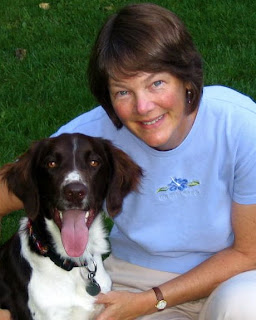 JOYCE SIDMAN
JOYCE SIDMAN
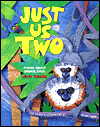
Joyce: Yes, those two books and many others I’ve written took a lot of research, but I loved it. One problem writers have is how to be productive when we’re not writing well—because of course you can’t make magic every day. Research is so fun and enriching and gives you something to do in those horrible blank spaces. Plus, it’s like a treasure hunt—tracking down what you need. These days, with the Internet, the chase is thrilling because you have the whole world at your fingertips.
Elaine: You say that nature inspires you. You seem to have a real passion for learning about the “physical world.” Have you had this interest in plants, animals, and the natural environment since you were a little girl?
Joyce: My sisters and I spent much of our free time outdoors and went to a summer camp that had unheated, unelectrified wooden cabins. Although my younger sister was the real animal nut (lizards & snakes in the bedroom), I felt a deep affinity for the natural world and its beauty; it filled me with peace, even as a child. Cities make me nervous, and I always gravitate toward green space. My interest in natural science, though, has grown steadily in the last decade or so. Now my favorite part of the New York Times is not the Book Review, but the Science section!
Elaine: You told me before that your most recent book, This Is Just to Say, came out of your work as a writer-in-residence—that it came pouring out of you in a way that other books haven’t. How long does it usually take for you to write a collection of poems? What is the process like?
Joyce: Well, it’s different for every book, but generally I start with an idea, or an image, or an emotion. I have a book coming out next year called Red Sings from Treetops—it’s about color in nature. This book started with the deep thrill that color gives me: a flaming red maple or the soft green of new buds. But an emotion or image is not enough—I have to figure out a “voice” for the book: a way to write it so that it captures that original emotion. I played around with all sorts of color poems, touching on this idea or that, and then retreating when it didn’t feel right. This happened over the course of a year. Finally one spring I looked down at some tracks in the mud, and a line came into my head: “Look down—brown. Deer were here, and a dainty raccoon.” That line isn’t even in the book anymore, but I knew that I’d found a way in, a way of talking about color as though it were alive. After that, the book took about three months to write and another few months of tinkering. I have to go slowly. If I force it, it’s just bad poetry. And I have to give it time to rest so I can look at it with fresh eyes and see if it still works.
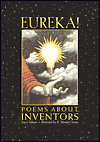
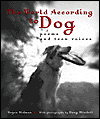
Elaine: I’d like to ask you a question that a second grade student asked me more than a dozen years ago: How come you know so much about poetry?
Joyce: What a great question! How did YOU answer it? And who says we know so much, anyway? Poetry is ultimately mysterious. The thing I love most about it is that I don’t understand it—can’t say for sure what makes one poem more powerful than another, or even WHY a poem is powerful. Ten year olds can write poems that are as breath taking as fifty year olds. The playing field is completely level. That’s why I love to go into classrooms: I feel as if I’m walking into a room of potential colleagues.
None of us knows everything about poetry. You can analyze it to death and still not know. And then a child—who has never written a poem—can come up with a line like “Fear feels like a spider web in my heart.”
Elaine: Do you think that you’ll ever attempt writing a picture book or a nonfiction book for children?
Joyce: Oh, I’ve written many picture books. They’re not very good. I have trouble with plot! I’ve also written novels and one nonfiction book. I would love to get one of them in good enough shape to publish. Some day!
Elaine: Would you like to tell us about any new poetry projects that you’re working on?
Joyce: I mentioned the color book. Also in production are a book called Ubiquitous about survivor organisms, and a book in the Water Boatman/Butterfly Eyes vein about the woods at night. And I’m playing around with some other poetry projects, nothing that has entirely coalesced. I hate the in-between periods, when I’m not settled on anything; they make me extremely nervous. What if I never have a good idea again?? Every writer would like to move smoothly from one project to the next, but that doesn’t always happen. And my husband will tell you that I get very whiney during those fallow periods!
Invitation to Write a Poem
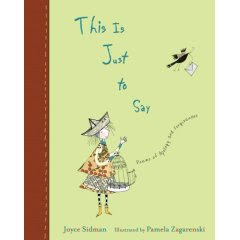
Joyce and I would like to invite readers of this interview to write their own poems of apology as Joyce did for her book This Is Just to Say: Poems of Apology and Forgiveness. Do you think you need some inspiration? You can read my review of This Is Just to Say here. It includes excerpts from some of the poems in the book. I also recommend reading the funny and touching poems of apology Jone’s students wrote. You’ll find the poems in this post at her blog, Check It Out.
And here, with Joyce’s permission, is a poem from This Is Just to Say:
Brownies--Oops!
By Joyce Sidman
I smelled them from my room:
a wafting wave of chocolate-ness.
I listened for movement,
ears pricked like a bat’s.
I crept down, stepped
over the sleeping dog.
I felt the cold linoleum
on my bare toes.
I saw the warm, thick
brick of brownies.
I slashed a huge chunk
right out of the middle.
The gooey hunks of chocolate
winked at me as I gobbled them.
Afterward, the pan gaped
like an accusing eye.
My head said, Oops!
but my stomach said, Heavenly.
by Maria
Last year, I was inspired to write a poem of apology and a response poem after reading Joyce’s book. Here are my two poems:
This Is Just to Say: A Poem to My Daughter
I have eaten
the chocolate bunny
I bought you
for Easter
a big-eared, brown hunk
of deliciouness
you probably saw
hidden
in the closet
and were expecting
to unwrap and savor
on a flower-filled Sunday
Forgive me
it was bittersweet
and creamy
and melted in my mouth
like snow
on the first warm day
of Spring.
A Daughter’s Response to Her Chockaholic Mother
Mom! How could you???
You know
I love chocolate, too!
You’re an adult
and should have better control
of your candy cravings.
Set an example
for your only child
who also has
a significant sweet tooth.
Next year,
open your wallet a little wider
and buy two bittersweet bunnies
so we can rhapsodize
in a duet
of ooohhhs and uuummmms
and indulge
in our chocolate Easter dreams
together
NOTE: If you write a poem of apology and post it at your own blog, please send me the link. If you’d like me to post your poem at Wild Rose Reader, type it in the comment section or send it to me via email.
ANOTHER NOTE: I would like to express my appreciation to Joyce Sidman for this in-depth interview about her "writing life," for writing wonderful books that connect poetry to the "physical world," and for granting me permission to post a poem from her book This Is Just to Say.
******************************
At Blue Rose Girls, I have the poem Ars Poetica by Archibald MacLeish.
The Poetry Friday Roundup is at The Well-Read Child.
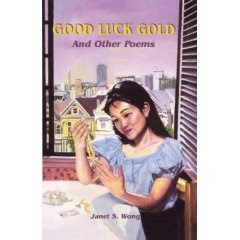
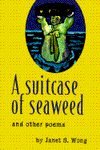
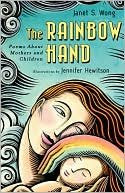


INTERVIEW WITH JANET WONG

Elaine: You were a student in the master class in poetry that the late Myra Cohn Livingston taught at UCLA. How did you come to know Myra and when did you become interested in writing poetry for children?
Janet: I heard Myra speak at a one-day UCLA Extension seminar, an “everything you need to know about writing a children’s book” class. I didn’t want to write poetry; I was there to hear an editor speak about the acquisition process.
When I heard Myra, I knew I could learn something from her. She was so confident and smart, and clearly a demanding teacher. Myra taught a Beginning Poetry class through UCLA Extension and also a Master Class (which was invitation-only). I signed up for her class in Beginning Poetry after receiving a pile of rejection letters. I had decided that it was time to learn to write for children—to learn about rhyme, repetition, and rhythm, poetic devices that would help me write a picture book. Picture books were my passion, and I simply wanted to use poetry to “sharpen my prose.” I only became interested in writing poetry for publication several months later, once I’d started raiding the 811 shelf at the library (fifty books at a time, at Myra ’s urging) and had fallen in love with poetry.
The next term I was invited to take the Master Class—because of luck, the bad luck of Ruth Bornstein (author/illustrator of the simple but brilliant book Little Gorilla), who had to skip the term because of a family emergency. It was truly incredibly good luck for me: many people had waited for years to get into the Master Class, yet I was invited to take Ruth’s spot very soon, probably because I happened to talk to Myra shortly after Ruth called her. Tony Johnston, Alice Schertle, Monica Gunning, April Halprin Wayland, Ann Whitford Paul, Kristine O’Connell George, Deborah Chandra, Joan Bransfield Graham, and more: this was quite an accomplished and talented group!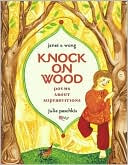
Elaine: Can you tell us anything about your experience in Myra’s class?
Janet: During class, we would go around the room and we would read a homework poem aloud, in rapid succession, without explanation. If someone started to apologize or give background info, they would be interrupted and reminded of the rule. Then we’d return to hear some poems again, and discuss briefly which parts we remembered. This was an excellent way to teach form and rhythm; after hearing a dozen poems that used anapest or a dozen sonnets, you’d have a great feel for what that rhythm or form was all about.
For the rhythm exercises, Myra would allow us to break a rhythm only if we could explain why. For instance, I might break a bunch of happy anapests with an iamb to draw attention to a couple of words that were more poignant. I rarely write in set forms and strict rhythms now, but these exercises gave me a great education, and many of my free verse poems do have a loose rhythmic structure that holds the poem together.
One exercise that Myra used to do every few months was a “grading” exercise—which helped spur a discussion of what makes a poem good. She would read a stack of poems in rapid succession, not identifying the poet, and we’d make a list of grades. When you don’t know that a poem is written by a “brand name” poet, you sometimes give his poems lower grades than you would if you knew. After our grades were marked, we’d go back over the poems, hear them and discuss them. I felt, early on, that I had such “McDonald’s taste” in poems, while Alice Schertle’s taste was clearly “gourmet.” After studying with Myra for about two years, I was finally able to give grades that matched Alice’s. My taste had “developed”—either that, or I had become really good at guessing which poems I was supposed to like!
Elaine: What kinds of writing assignments did Myra give her students to work on at home?
Janet: Myra’s weekly homework assignments usually required us to write a half-dozen poems: a poem using a certain metrical structure (iamb, trochee, dactyl, or anapest), another poem in a certain form (villanelle, triolet, limerick, tanka, etc.), a haiku (always a haiku), a poem on a certain subject theme, poems exploring voice or another technique (assonance, consonance, alliteration, personification, metaphor, simile).
One of my favorite homework assignments was the “voice change” exercise. If we had written a poem in a third-person narrative voice, we’d have to do a second poem in the first-person lyrical voice. After that, we’d write versions in the voice of the mask, and apostrophe, and conversation. The change of voice often resulted in fresh new language and insights. For instance: a narrative poem about the wind might simply describe a scene where the wind blows the hat off a girl’s head. In the lyrical version, the girl might talk about losing her hat to the wind. In the voice of the mask, though, the poet would become the wind, and all of a sudden new ideas might arise: perhaps the wind is no longer just “blowing” but actually “stealing” the coveted hat. Using apostrophe, the girl would talk to the wind, and might plead with it to return her hat, or might threaten or cajole. In a conversation version, the girl and wind (or girl and hat) might scream at each other, or tease. The voice change exercise reliably creates elements and introduces words that will not arise in the course of revising a poem over and over in one voice only. 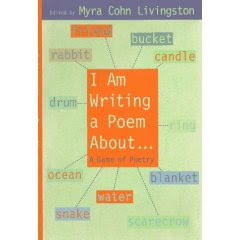
Another favorite homework assignment is explained in Myra’s book I Am Writing a Poem About…, sadly out-of-print but available at many libraries. Young poets raised on the Magnetic Poetry craze enjoy this exercise, but I rarely use it when I visit schools for just a day or two; instead, I usually use our limited workshop time to do a metaphor/simile poem instead. Recently, though, I did the “Ring/Blanket/Drum” exercise with a group of teachers during a lunchtime workshop at Collegiate School in Richmond, Virginia, and the results were fantastic. First I told them that they’d be writing a poem using the words ring, blanket, and drum. Then I read a few examples from the book, which contains the homework assignments of Myra’s Master Class students. Here is my ring/blanket/drum poem:
Oh, Brother!
By Janet Wong
The little squirt,
begging for boiled eggs and toast,
circles me like a wrestler in the ring,
bouncing on my bed,
bouncing,
bouncing,
bouncing,
bouncing,
and when I try to hide my head,
he dives under the blanket,
to drum my stomach
until it surrenders
a growl.
I spoke for three minutes about rhyme, off-rhyme, repetition, and rhythm—and they wrote for five minutes. Here are three examples of what they accomplished:
The Ring
By Stephanie Franz
She sees his ring
Memories
Her wedding day, the children, the trips, the
first time they conquered a mountain,
the last time they struck a golf ball...
Memories
Soon she will remove the ring
while wrapping him in a blanket of love
His soul will soar to meet his maker
while the drum of her heart carries on their tune
She will wear his ring.
A Poem
By Fletcher Collins
A blanket of silent fog
The glasslike ring of an invisible mast
No need for a drum
A Poem
by Nathan Goodwyn (7th/ 8th grade English)
A drum ring:
a place where
hands cackle together
throwing aside the day's more mundane obligations
as if they were the morning's blanket
I told Janet that I would also try writing a Ring/Drum/Blanket Poem. Here’s my contribution:
The Early Sixties: A Summer Day
By Elaine Magliaro
On an old army blanket,
a rough, khaki-colored island
floating on a sea of sand
at Devereaux Beach,
we sit in a circle…
a ring of friends
playing kitty whist,
drinking cola,
talking about boys, and
listening to rock and roll music…
to the sexy sound of the sax
wafting over us
moaning about love,
to a drum beating
like a young heart in overdrive.
Invitation to Write a Poem
Janet and I would like to invite all of you reading this interview to try writing your own poem using the three words—ring, drum, and blanket. You can post your poem at your own blog, if you have one, and send me the link—or email me your poem and I will post it at Wild Rose Reader.
NOTE: I would like to thank Janet Wong for this informative interview in which she discussed her experiences as a student in the master class on poetry taught by Myra Cohn Livingston. I would also like to extend my appreciation to Janet, Stephanie Franz, Fletcher Collins, and Nathan Goodwyn for granting me permission to post their original poems at Wild Rose Reader.
******************************
At Blue Rose Girls, I have a poem by Billy Collins entitled Workshop.
Cloudscome has the Poetry Friday Roundup at A Wrung Sponge.
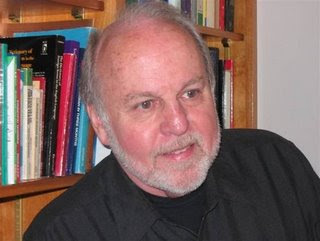
J. Patrick Lewis is not only a prolific and talented children’s poet—he is also a very generous one indeed. Today he emailed me and asked if I would be interested in posting the following poem on my blog. Would I!!! The poem, Mr. Mack Celebrates the 100th Day of School, will appear next year in his book Countdown to Summer: A Poem for Every Day of the School Year (180 poems). The book sounds like a terrific one to have on hand in a classroom, doesn’t it?
Mr. Mack Celebrates the 100th Day of School
by J. Patrick Lewis
NOTE: All pre-publication rights belong to J. Patrick Lewis.
Assignment, students, write a story—
“Tomorrow is The Hundredth Day”—
And tell me what’s so hunky-dory
About it in a funky way.
You might begin with “Listen, homey,
Tomorrow is the hundredth day
With wacky Mr. Mack." You know me.
What would you really like to say
About your favorite English teacher?
Tomorrow is the hundredth day.
Describe my most amazing feature.
And no, I don’t wear a toupee!
Elsewhere in the kidlitosphere today: Laura Purdie Salas also posted a poem written by J. Patrick Lewis. It’s entitled Everything Is a Poem. It’s a wonderful metaphor poem. I hope he publishes it in a book.
Do check out my interview with J. Patrick Lewis, which I posted at Wild Rose Reader last Friday.
 Here’s an updated version of a Blue Rose Girls blog I posted for National Poetry Month last year. It includes links to websites with poetry resources for children, teachers, homeschoolers, and anyone else who happens to be a poetry lover like me.
Here’s an updated version of a Blue Rose Girls blog I posted for National Poetry Month last year. It includes links to websites with poetry resources for children, teachers, homeschoolers, and anyone else who happens to be a poetry lover like me.
He is surely a wonderful poet & mentor for many. I love the poem you shared. I use the other one for 'poem in your pocket' day, and am glad to be aware of this one, too. Have fun being a granny!
Huzzah for JPL! He was a great choice for the NCTE award!!!
hello) very good post! thank you